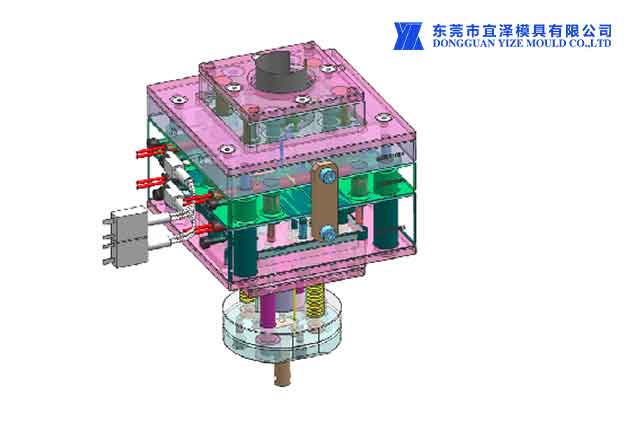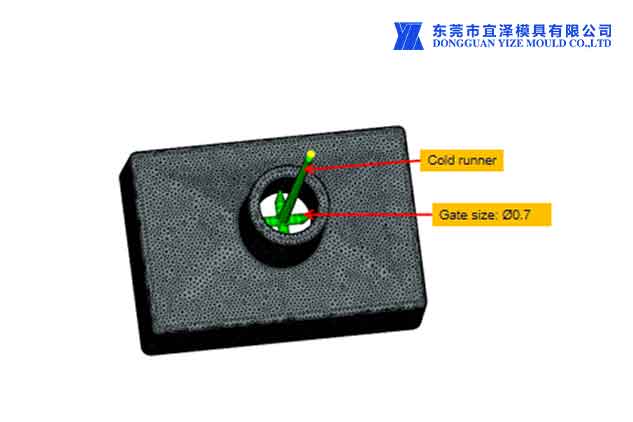High precision plastic injection mold design refers to the personnel engaged in the digital design of enterprise molds, including cavity molds and cold stamping molds. On the basis of traditional mold design, digital design tools are fully applied to improve mold design quality and shorten mold design cycles.
1. Preparation before high precision plastic injection mold design
(1) Design task book
(2) Familiar with plastic parts, including its geometric shape, the use requirements of plastic parts, and the raw materials of plastic parts
(3) Check the molding process of plastic parts
(4) Specify the model and specification of the injection machine
2. Develop molding process documents
(1) Overview of the product, such as schematic diagram, weight, wall thickness, projected area, external dimensions, with or without undercuts and inserts
(2) Overview of the plastics used in the product, such as product name, model, manufacturer, color, and drying conditions
(3) The main technical parameters of the selected injection machine, such as the relative size between the injection machine and the installed mold, screw type, power
(4) Injection machine pressure and stroke
(5) Injection molding conditions such as temperature, pressure, speed, clamping force, etc.

3. Injection mold structure high precision plastic injection mold design steps
(1) Determine the number of cavities.
Conditions: maximum injection volume, clamping force, product accuracy requirements, economy
(2) Select the parting surface. It should be based on the principle of simple mold structure, easy parting and does not affect the appearance and use of plastic parts
(3) Determine the layout of the cavity. Balanced arrangement as much as possible
(4) Determine the gating system. Including main runner, branch runner, gate, cold material hole, etc.
(5) Determine the demoulding method. Design different demoulding methods according to different parts of the mold where the plastic parts are left.
(6) Determine the structure of the temperature regulation system. The temperature regulation system is mainly determined by the type of plastic.
(7) When it is determined that the die or core adopts the insert structure, the inserts are divided propositionally and the inserts are inserted at the same time, the machinability and the installation and fixing method.
(8) Determine the exhaust form. General exhaust can use the mold parting surface and the gap between the ejection mechanism and the mold, and for large and high-speed molding injection molds, the corresponding exhaust form must be designed.
(9) Determine the main dimensions of the injection mold. Calculate the working size of the molded part according to the corresponding formula and determine the thickness of the side wall of the mold cavity, the cavity bottom plate, the core backing plate, the thickness of the movable platen, the thickness of the cavity plate of the block type cavity and the closed height of the injection mold .
(10) Use standard mold base. According to the main dimensions of the injection mold designed and calculated, the standard mold base of the injection mold is selected, and the standard mold parts are selected as far as possible.

(11) Draw the structural sketch of the mold. Drawing the complete structural sketch of the injection mold and drawing the mold structure diagram are very important tasks in the mold design.
(12) Check the relevant dimensions of the mold and the injection machine. Check the parameters of the injection machine used: including the maximum injection volume, injection pressure, clamping force, and the size of the installation part of the mold, the mold opening stroke and the check of the ejector mechanism.
(13) Review of injection mold structure design. Carry out a preliminary review and obtain the consent of the user, and it is necessary to confirm and modify the requirements of the user.
(14) Draw the assembly drawing of the mold. Clearly indicate the assembly relationship, necessary size, serial number, detailed list, title bar and technical requirements of each part of the injection mold
The plastic injection molding parts process and technical requirements are as follows:
a. The performance requirements for the mold structure, such as the assembly requirements for the push-out mechanism and the core-pulling mechanism;
b. Requirements for the mold assembly process, such as the fitting gap of the parting surface, the parallelism of the upper and lower parts of the mold;
c. Requirements for the use of molds;
d. Requirements for anti-oxidation treatment, mold number, lettering, oil seal and storage;
e. Requirements for mold testing and inspection.
(15) Draw the mold parts diagram. The order of dismantling and drawing the part drawing from the mold assembly drawing or the component drawing is: first inside and then outside, first complex and then simple, first forming parts and then structural parts.